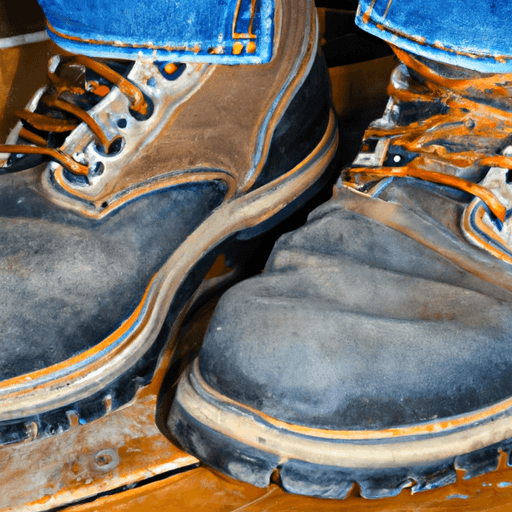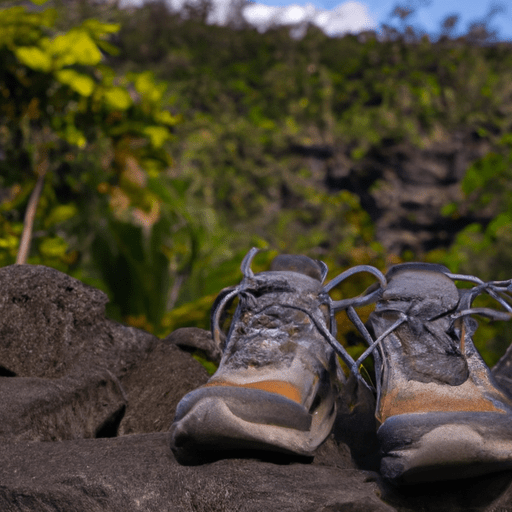So, you’ve been eyeing those trendy duck boots and wondering if they’re actually suitable for hiking? Well, you’re in the right place to find out! In this article, we’ll take a closer look at the question on everyone’s minds – are duck boots good for hiking? We’ll explore the features of these stylish yet practical shoes and assess their durability, comfort, and performance on various terrains. Get ready to lace up and discover if duck boots have what it takes to conquer the trails!

Understanding Duck Boots
Definition of duck boots
Duck boots, also commonly known as bean boots, are a type of footwear that combines the features of both a shoe and a boot. They feature a sturdy rubber sole and a leather upper, providing protection and durability. What sets duck boots apart is their unique design which includes a waterproof lower section usually made of rubber, and a leather or fabric upper that is often insulated.
History and origin of duck boots
Duck boots have a rich history that dates back to the early 20th century. They were originally designed by L.L. Bean, the founder of the well-known outdoor retailer, in 1911. Bean created these boots with the intent of providing reliable footwear for outdoor enthusiasts who needed protection from wet and cold conditions. Since then, duck boots have gained popularity for their functionality and have become a staple in the wardrobes of hikers, campers, and outdoor enthusiasts worldwide.
Common materials used in production
Duck boots are typically made using a combination of various materials to ensure durability and functionality. The lower section of the boot, which is responsible for waterproofing, is commonly made from rubber or vulcanized synthetic materials. This provides excellent protection against water and helps to keep the feet dry. The upper section, on the other hand, is usually made from leather, nylon, or a combination of both. This upper material provides flexibility, breathability, and added insulation in some models.
Features of Duck Boots
The boot design
Duck boots have a unique design that sets them apart from traditional hiking boots. They typically feature a low ankle height, allowing for increased mobility and flexibility. The design also includes a distinct rubber lower section that extends upwards to protect the feet from water and moisture. The upper section, made of leather or fabric, provides support and insulation, ensuring comfort in various weather conditions.
Insulation and waterproof features
One of the key features of duck boots is their insulation and waterproofing capabilities. The combination of the waterproof rubber lower section and the insulated upper section makes them suitable for wet and cold weather conditions. The rubber lower section prevents water from seeping into the boots, while the insulation in the upper section helps to keep the feet warm and dry, even in freezing temperatures.
The sole and its attributes
The sole of duck boots is typically made of durable rubber, providing excellent traction and grip on various terrains. The thick rubber sole helps to prevent slips and falls, especially on wet and slippery surfaces. Additionally, the sole often has a unique tread pattern that helps to channel water away and grip the ground effectively. This feature makes duck boots ideal for hiking on muddy or watery trails.
Benefits of Duck Boots
Wearing in wet weather conditions
Duck boots are designed to excel in wet weather conditions. Whether you’re hiking through rain-soaked trails or crossing streams, the waterproof rubber lower section of duck boots ensures that your feet stay dry throughout your outdoor adventures. The combination of the rubber sole and the waterproof upper material provides a protective barrier against moisture, making them an excellent choice for hikers who often encounter wet environments.
Long-lasting and durable
One of the major advantages of duck boots is their exceptional durability. The combination of high-quality rubber and leather or fabric upper material ensures that these boots can withstand the rigors of outdoor activities. Duck boots are built to last, making them a great investment for hiking enthusiasts who are looking for a pair of boots that can withstand the test of time and continue to perform even after multiple hikes.
Versatile for various activities
Duck boots are not limited to hiking alone; they are versatile enough to be used for a wide range of outdoor activities. Whether you’re camping, fishing, or simply exploring nature trails, duck boots provide the versatility and functionality needed to tackle different terrains and weather conditions. They offer the perfect combination of protection, traction, and comfort, making them a reliable choice for any outdoor adventure.
Limitations of Duck Boots
Not ideal for long walking
While duck boots are suitable for shorter hikes and outdoor activities, they may not provide the same level of comfort and support for longer walking or trekking expeditions. The low ankle height and the design of duck boots focus more on flexibility rather than providing extensive ankle support. Therefore, if you’re planning a long-distance hike or backpacking trip, it may be worth considering other types of hiking boots that offer more support and cushioning.
Limited ankle support
As mentioned previously, duck boots generally have a low ankle height, which means they may not provide the same level of ankle support as taller hiking boots. This can be a drawback for hikers who require extra support and stability, especially when traversing uneven terrain or steep inclines. If you have weak ankles or are prone to ankle injuries, it may be beneficial to opt for hiking boots that offer more ankle support.
Possible lack of breathability
Due to their design and materials, duck boots may not provide the same level of breathability as hiking boots specifically designed for ventilation. While some duck boot models offer mesh panels or breathable liners, the combination of a rubber lower section and an insulated upper can lead to less airflow. This may cause your feet to sweat more, potentially resulting in discomfort or unpleasant odors. It is important to consider breathability as a factor when choosing footwear for hiking in warmer climates.

Comparing Duck Boots to Hiking Boots
Hiking boots features
Hiking boots are specifically designed for the rigors of hiking and offer a range of features to ensure maximum comfort and support. They often have a taller, more supportive design that provides increased ankle stability, crucial when traversing rocky or uneven terrain. Hiking boots typically utilize advanced technologies such as cushioned midsoles, supportive arches, and breathable uppers to enhance performance and reduce fatigue during long hikes.
How duck boots differ from hiking boots
Duck boots differ from hiking boots in several ways. The most notable difference lies in their design and intended use. Duck boots are primarily designed for wet and cold weather conditions, providing waterproofing and insulation, whereas hiking boots are designed to provide comfort, support, and stability during long-distance hikes on various terrains. Duck boots have a lower ankle height and may lack some of the technical features found in hiking boots.
Comparing the comfort and support given by both boots
When it comes to comfort and support, hiking boots often outperform duck boots, especially for extended hikes. Hiking boots are specifically engineered to provide cushioning, shock absorption, and arch support, which helps to reduce fatigue and prevent foot and leg pain. On the other hand, while duck boots may lack some of these advanced features, their design still offers decent comfort and support for shorter hikes and less demanding trails.
Use of Duck Boots in Different Terrain
Effectiveness of duck boots on flat terrain
Duck boots can be highly effective on flat terrains, especially when encountering wet and muddy conditions. The rubber sole and waterproof lower section provide reliable traction, preventing slips and falls on slippery surfaces. The versatility of duck boots allows hikers to confidently navigate through puddles and muddy trails without compromising the comfort and dryness of their feet. They are a practical choice for hikes in wetland areas or trails with a high probability of encountering water.
Challenges of using duck boots on rough terrain
While duck boots excel in wet and muddy terrain, they may pose some challenges when faced with rough or rugged landscapes. The lower ankle height and lack of extensive ankle support may lead to increased strain or discomfort when navigating through uneven and rocky terrains. It is important to consider the demands of the specific hiking trail and terrain before opting for duck boots, as alternative hiking boots may provide better stability and protection in such conditions.
Duck boots’ performance on wet and slippery ground
When it comes to wet and slippery ground, duck boots truly shine. The rubber sole and waterproof lower section of duck boots provide excellent traction and grip, minimizing the risk of slips and falls. Whether it’s crossing streams or hiking on rain-soaked trails, duck boots can provide the necessary grip and confidence to navigate through these challenging conditions. Their performance on wet and slippery ground is a testament to their effectiveness as all-weather footwear.

Experience of Hikers with Duck Boots
First-hand accounts of hikers
Hikers who have worn duck boots on their adventures have provided valuable insights into the performance of these boots in different environments. Many hikers praised the waterproofing capabilities of duck boots, highlighting the fact that their feet remained dry even after walking through puddles or wet grass. Additionally, hikers commended the traction provided by the rubber sole, stating that they felt secure and stable on various terrains.
Common complaints
While overall satisfaction with duck boots is high, there are some common complaints that hikers have voiced. One recurring complaint is the lack of arch support in some models, which can lead to discomfort during longer hikes. Another complaint is the potential lack of breathability, particularly in warmer weather, causing the feet to sweat more than desired. These complaints emphasize the importance of considering individual needs and preferences when selecting footwear for hiking.
Positive feedback
Despite the limitations, many hikers still find duck boots to be a reliable and useful option for their outdoor adventures. Positive feedback often focuses on the durability and waterproof features of duck boots, with many hikers expressing gratitude for the long-lasting quality of their boots. The versatility of duck boots for various activities, not just hiking, is another aspect that hikers appreciate, as it allows them to get the most out of their investment.
Safety Concerns when Hiking with Duck Boots
Potential slip risks
While duck boots offer great traction on wet and slippery ground, it is important to note that no footwear is entirely slip-proof. Hikers should exercise caution, especially on extremely slippery surfaces such as moss-covered rocks or icy slopes. It is advisable to take additional safety measures, such as using trekking poles or slowing down your pace, to minimize the risk of slipping and falling, regardless of the footwear chosen.
Lack of ankle support concerns
As mentioned earlier, duck boots typically have a lower ankle height compared to hiking boots. This can be a concern for hikers who require extra ankle support and stability to prevent injuries. It is crucial to assess your specific hiking conditions and personal needs when deciding if ankle support is a priority. If ankle support is a significant concern, alternative hiking boots with higher ankle heights and additional support features may be a more suitable choice.
Possible discomfort on long hikes
Due to their design and features, duck boots may not provide optimal comfort for long-distance hikes. The lack of advanced cushioning and arch support can lead to discomfort and foot fatigue after extended periods of walking. It is recommended to consider the duration and intensity of your hikes when choosing footwear. For longer hikes, it may be beneficial to opt for hiking boots designed specifically for extended comfort and support.
Recommendations for Hiking with Duck Boots
Appropriate hiking trails for duck boots
Duck boots are well-suited for certain hiking trails and environments. They excel in wet and muddy conditions, making them a great choice for hikes in marshlands, wetlands, or rain-soaked trails. Additionally, they can be an excellent option for shorter hikes and day trips on less challenging terrains. It is important to assess the demands of the specific hiking trail and terrain before opting for duck boots to ensure they will provide the desired comfort and support.
Precautions to take
When hiking with duck boots, there are a few precautions you can take to maximize their effectiveness and ensure a safe and comfortable experience. Firstly, ensure that the boots are properly sized and fitted to avoid discomfort or blisters. Secondly, consider wearing moisture-wicking socks to help manage sweat and reduce the chance of blisters. Additionally, it may be beneficial to carry an extra pair of socks in case your feet get wet during the hike. Finally, always exercise caution and be aware of your surroundings to prevent accidents or injuries.
How to improve the hiking experience with duck boots
While duck boots may have certain limitations, there are steps you can take to enhance your hiking experience with them. Adding aftermarket insoles with arch support and cushioning can improve the comfort and reduce foot fatigue during longer hikes. It is also recommended to break in your duck boots before embarking on a challenging hike to ensure they mold to your feet and minimize the risk of blisters. By taking these measures, you can optimize the performance and comfort of your duck boots on the trail.
Conclusion: Are Duck Boots Suitable for Hiking?
Considering the pros and cons
After evaluating the features, benefits, and limitations of duck boots, it is clear that they offer advantages for specific hiking scenarios. Duck boots excel in wet and muddy conditions, providing reliable waterproofing and excellent traction. They are durable and versatile, making them suitable for a range of outdoor activities beyond hiking. However, their lower ankle height, potential lack of arch support, and limited breathability may not make them the ideal choice for longer hikes or more challenging terrains.
Final verdict based on expert opinions
While opinions may vary among hikers and outdoor enthusiasts, the consensus among experts is that duck boots are not specifically designed for intensive hiking or backpacking. They are better suited for shorter hikes on less demanding trails. For serious hikers or those planning extensive trips, investing in hiking boots with advanced features such as ankle support, cushioning, and breathability is highly recommended to ensure comfort, protection, and stability.
Alternative footwear options for hikers
For hikers seeking alternatives to duck boots, a wide range of purpose-built hiking boots is available on the market. These boots offer advanced features tailored to the demands of hiking, such as improved ankle support, cushioning, breathability, and protection. Depending on your specific needs, terrain, and expected hiking conditions, it is advisable to explore different hiking boot options and consult with professionals to find the most suitable footwear for your hiking adventures.






